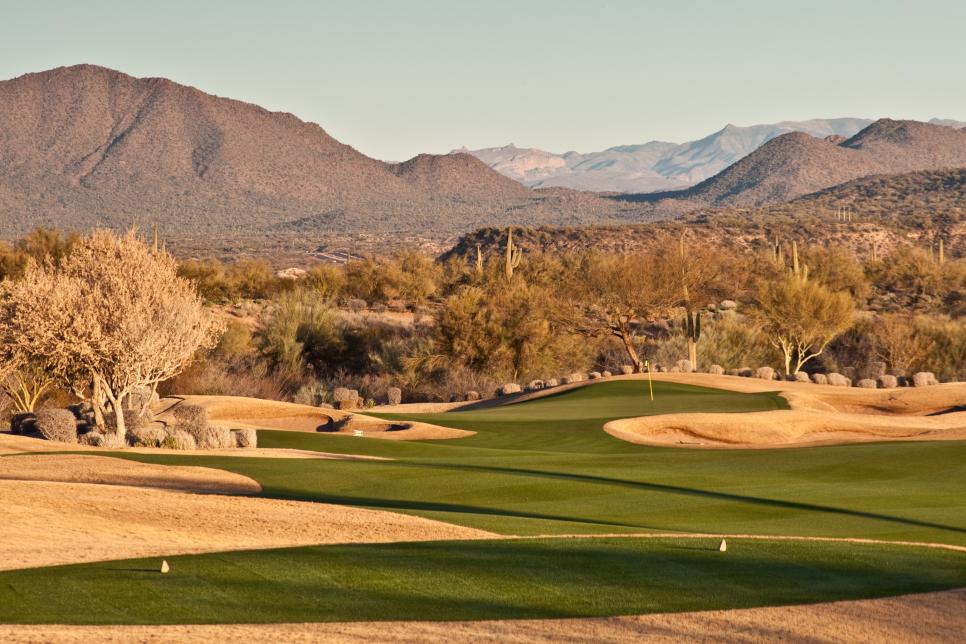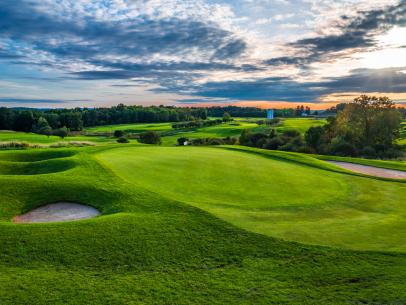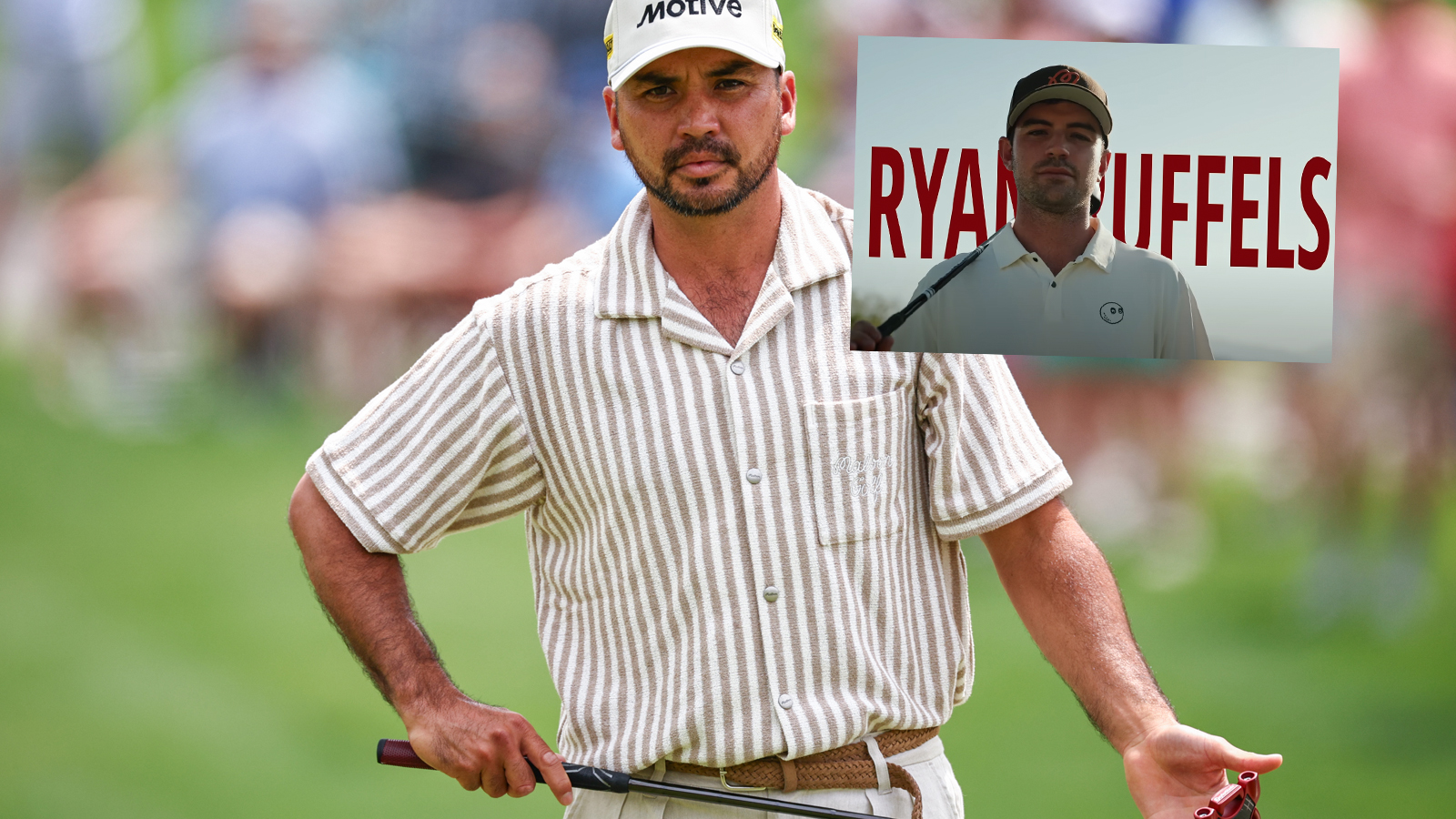Ask a Super: Why’s the grass all brown on our course? – Australian Golf Digest

- by Admin
- June 1, 2024

As golfers, we often let the colors we see on a course dictate whether we think it’s in good shape or not. Green, good. Brown, bad. It’s not that simple, though.
Aside from a compelling argument that browner, firmer turf is ideal for playability, courses in certain climates may turn almost completely brown for several months of the year—and it is not because the grass is dead.
MORE: Ask a super—We all want fast greens, why can’t you just cut them shorter?
To help explain why a course might have plenty of brown turf in the cooler months, we caught up with Scott Hebert, the director of agronomy at Grass Clippings Rolling Hills, an intriguing new night golf course in Tempe, Ariz. Hebert has previously worked at numerous top courses across the country, including TPC Scottsdale, Quail Hollow Club and Congressional Country Club.
Golf Digest: Scott, it seems like some courses, depending on the season, are almost entirely brown. What’s going on there?
The grass is likely dormant, which typically happens during the offseason on courses with Bermuda grass. Bermuda thrives in all of your warm environments, from Arizona all the way across the South to Florida and up to the Carolinas.
During the cooler months, if you don’t overseed that grass, then it will become dormant and turn brown. It’s not dead, but it’s asleep, meaning that it’s not actively growing because the temperatures are too cool. It will come back when the temperatures warm back up.
ImagineGolf
What is overseeding?
To overseed the grass, you first scalp it down, cutting the grass down to the nubs—extremely short. Then, you’ll usually put down ryegrass if the area is off the green and something like Poa triv (Poa trivialis) on the greens.
MORE: I repaired my ball mark, but it still doesn’t look right. What did I do wrong?
Those grass types are much more durable under cooler temperatures, so they will continue to grow in the winter. So, that ryegrass and Poa triv becomes your winter plant material and your playing surface in the cooler months.
Why would a course want to overseed?
It enhances the playability of the turf and helps it recover from a lot of play. At peak season we will see 300-plus rounds a day, and if there is not actively growing plant material there, then it won’t recover. That’s what would happen if the grass stayed dormant and wasn’t overseeded. Your divots won’t get filled in, ball marks won’t recover and the course will start to take a beating.
A lot of courses in the winter seem to have green fairways and brown rough. So, it seems that they are only overseeding the fairways. Why?
Exactly, courses will only overseed the fairways in order to save on money on water, labor and fertilizers. When you leave the rough dormant, you hardly have to do anything to it in terms of maintenance.
More From Golf Digest  Personal Faves My 5 favorite public golf courses around New York City (and some advice for playing them) How much money does it save?
Personal Faves My 5 favorite public golf courses around New York City (and some advice for playing them) How much money does it save?
Well, for example at Grass Clippings in Tempe, we’re given a 200 acre-foot allotment of water every year from the Salt River Project. The water currently costs around $304 per acre-foot, but that goes up every year.
In the summer months, we have to water all 42 acres of grass on our course. Last July, we used 31.5 acre-feet of water, which cost about $10,000. And that’s just one month.
By contrast, in the winter months, with all our rough dormant, we only have 13 acres of overseeded turf to maintain. In January 2024, for example, we only pumped in 1 acre-foot of water, so it cost just $300. By not overseeding our entire course, we saved over $9,000 in January alone.
Aside from water use, not overseeding the rough allows us to maximize labor, fertilizers, chemicals and mowing to higher priority areas of the facility during the busy winter season.
MORE ON COURSE MAINTENANCE:
Ask a super: We all want fast greens, why can’t you just cut them shorter?
Ask a super: I repaired my ball mark, but it still doesn’t look right. What did I do wrong?
7 home lawn care tips from golf course superintendents
Aerating greens, explained by a top course superintendent
Why your superintendent is hoping for lots of snow this winter
Ask an architect: Many golfers like fast greens, but do they ruin good architecture?
This article was originally published on golfdigest.com
The Latest News
-
December 25, 2024Christmas at the ‘G! Aussie stars and family lap up big day
-
December 25, 2024‘They’re the idiots who picked me’: Aussie skipper’s hilarious message to relieve pressure on new opening sensation
-
December 25, 2024Aussie path to Champions Trophy glory begins with Ashes clash as schedule revealed
-
December 24, 2024‘Good to go’: Head’s cheeky injury jab as ‘unbelievable’ Aussie run machine gets green light
-
December 24, 2024World No.1 weighs in as doping cases rock tennis





